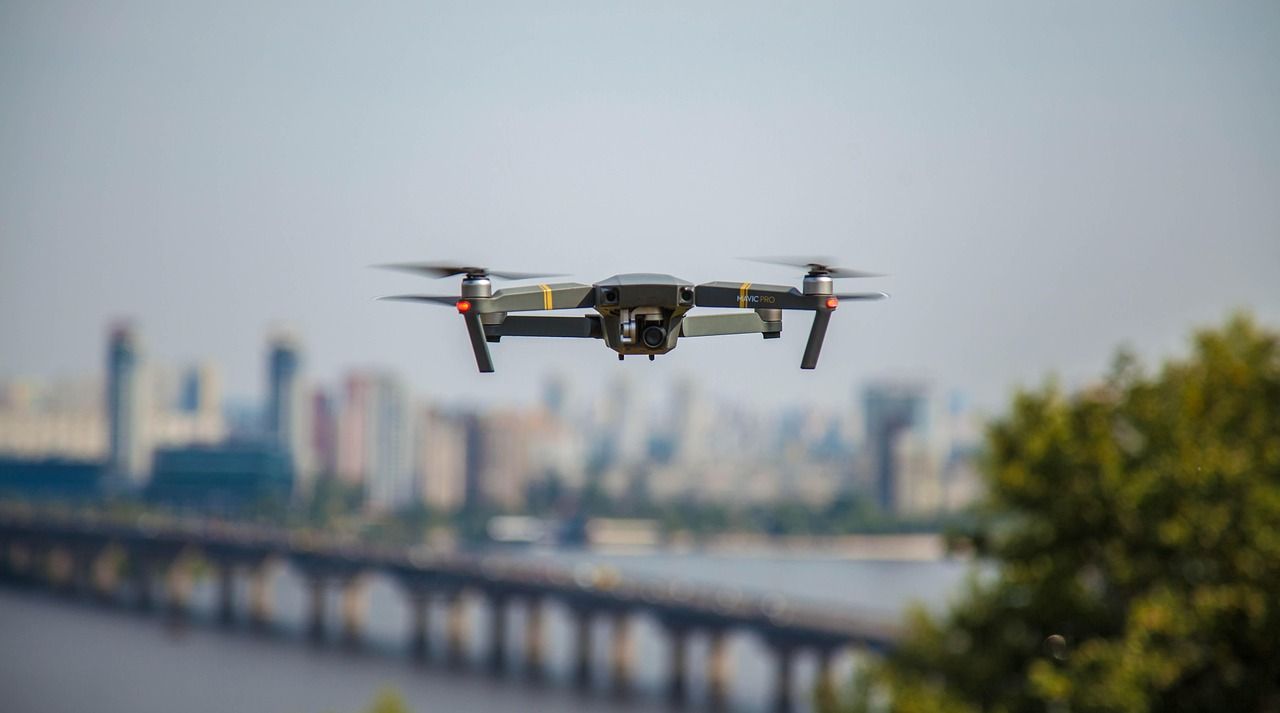Defending Against Threats: Risk Assessment and Mitigation in Government Buildings
Introduction
Security is a paramount concern for government facilities, as they house critical assets, personnel, and sensitive information. The safety of employees, visitors, and the protection of valuable assets are of utmost importance in ensuring the smooth functioning of these institutions. Threats to government buildings can range from physical breaches, terrorist attacks, natural disasters, to internal security breaches. To safeguard against these risks, an effective risk assessment and mitigation strategy is essential. In this article, we will delve into the significance of risk assessment and mitigation in government facilities, exploring key methodologies and best practices to enhance security measures.
Understanding Risk Assessment
Risk assessment is a structured process of identifying potential threats, evaluating their likelihood and impact, and developing strategies to address and mitigate them. It is a proactive approach to security that enables government institutions to anticipate potential vulnerabilities and prepare adequate response plans.
Identifying Potential Threats
The first step in risk assessment is to identify potential threats that government facilities may face. This includes both external and internal threats. External threats can encompass terrorist attacks, civil unrest, protests, natural disasters, and cyber-physical threats. Internal threats, on the other hand, may involve insider threats, unauthorized access, employee misconduct, and theft of sensitive information.
To accurately identify potential threats, government facilities should collaborate with security experts, law enforcement agencies, and intelligence units. Conducting comprehensive threat assessments should involve evaluating historical data, analyzing current global and local security trends, and considering specific factors unique to the facility's location and function.
Evaluating Likelihood and Impact
Once potential threats are identified, a risk assessment team must analyze the likelihood of each threat occurring and the potential impact it could have on the facility and its operations. This evaluation helps prioritize risks and allocate resources efficiently.
Likelihood assessments involve analyzing historical data, current threat trends, and intelligence reports to determine the probability of each threat manifesting. The impact assessment evaluates the potential consequences of each threat, including harm to personnel, damage to infrastructure, financial losses, and reputational damage.
To conduct a thorough evaluation, risk assessors may use various methodologies such as qualitative risk analysis, quantitative risk analysis, or a combination of both. Qualitative analysis relies on expert judgment and subjective scales to assess risk, while quantitative analysis employs numerical data and statistical models to quantify risk in monetary terms or other measurable units.
Vulnerability Assessment
Conducting a vulnerability assessment involves identifying weaknesses in the facility's security infrastructure, processes, and policies that may be exploited by potential threats. Vulnerability assessments provide crucial insights into areas that require immediate attention and improvements.
Vulnerability assessments should encompass physical security measures, such as access control systems, perimeter barriers, surveillance systems, and alarm systems. Additionally, they should address cybersecurity measures, personnel training, emergency response plans, and compliance with relevant security regulations.
Physical security vulnerabilities might include inadequate access control mechanisms, insufficient surveillance coverage, poorly lit areas, and weak points in perimeter defenses. Cybersecurity vulnerabilities may involve outdated software, unpatched systems, weak passwords, and lack of network segmentation.
Mitigation Strategies for Government Facilities
With a comprehensive risk assessment in place, government facilities can implement effective mitigation strategies tailored to their unique needs. Here are some key strategies for enhancing security:
1. Access Control Systems
Implementing robust access control systems is fundamental to securing government buildings. This includes employing measures such as smart card readers, biometric authentication, and video surveillance to monitor and regulate access to different areas within the facility.
Multi-factor authentication (MFA) provides an extra layer of security by requiring individuals to provide two or more forms of identification to gain access. MFA can include a combination of something they know (e.g., a password), something they have (e.g., an access card), and something they are (e.g., biometric data).
2. Physical Barriers and Perimeters
Physical barriers, such as fences, bollards, and vehicle blockers, create a formidable deterrent to unauthorized entry and vehicular attacks. Adequate perimeter security plays a crucial role in protecting government buildings from external threats.
Government facilities should invest in security measures that create a layered defense approach, combining physical barriers, surveillance cameras, and human patrols. The concept of "Crime Prevention Through Environmental Design" (CPTED) can guide the design and layout of government buildings to reduce potential criminal opportunities.
3. Security Personnel Training
Well-trained security personnel are the first line of defense against security threats. Government facilities should invest in comprehensive training programs to equip security personnel with the necessary skills and knowledge to handle various security scenarios effectively.
Training programs should cover areas such as threat recognition, emergency response procedures, de-escalation techniques, and conflict resolution. Security personnel should also receive regular updates on evolving security threats and best practices.
4. Incident Response and Emergency Preparedness
Developing a detailed incident response and emergency preparedness plan is essential for government facilities. This plan should outline immediate actions to be taken in case of an incident and establish effective communication channels with law enforcement agencies and emergency responders.
The incident response plan should define roles and responsibilities, establish an incident reporting process, and identify critical points of contact both within and outside the facility. Regular drills and exercises should be conducted to test the effectiveness of the plan and identify areas for improvement.
5. Regular Drills and Testing
Conducting regular security drills and testing the effectiveness of security measures help identify weaknesses and areas for improvement. These drills also familiarize employees with emergency procedures, ensuring a coordinated response in times of crisis.
Facilities should conduct various types of security drills, including lockdown drills, evacuation drills, active shooter scenarios, and bomb threat simulations. The insights gained from these exercises enable government institutions to fine-tune their security protocols and ensure a swift and efficient response to emergencies.
6. Secure Data Management
Protecting sensitive information is critical for government facilities. Implementing secure data management practices, including data encryption, restricted access to information, and regular data backups, is essential to safeguard against data breaches.
Facilities should classify data based on its sensitivity and implement access controls accordingly. Encrypting data both at rest and in transit adds an additional layer of protection against unauthorized access. Regular data backups and off-site storage help ensure data availability even in the event of a security breach or natural disaster.
7. Employee Awareness and Training
Employees play a vital role in maintaining the security of government facilities. Ensuring that employees are aware of security protocols and best practices is crucial in preventing security incidents caused by human error or lack of awareness.
Employee training should encompass cybersecurity awareness, social engineering prevention, and recognition of suspicious behavior. Encouraging a culture of security awareness and reporting incidents or security concerns fosters a vigilant and proactive approach to security within the facility.
Conclusion
Government facilities hold immense significance, and ensuring their security is of utmost importance. Through comprehensive risk assessment and mitigation strategies, these institutions can proactively address potential threats and vulnerabilities. By employing advanced technologies, well-trained personnel, and robust security measures, government facilities can create a safe and secure environment for their employees, visitors, and valuable assets.
The continuous evaluation and improvement of security practices are vital in staying one step ahead of emerging threats. A proactive approach to security ensures that government facilities can fulfill their vital roles in serving the public while safeguarding the nation's interests. By combining risk assessment, mitigation strategies, and ongoing vigilance, government facilities can defend against threats effectively.
To claim your FREE Sky-Walker 3 Product Ebook click the button below!
To get the information you need to know what Sky-Walker can do for your organisation, request a free live demo now and see Sky-Walker in ation!
Stay up-to-date with our Sky-Walker Monthly newsletter! Subscribe now and receive a new issue in your mailbox every month!








 Download Product Ebook
Download Product Ebook View all our solutions
View all our solutions Sky-Walker Architecture
Sky-Walker Architecture View all our integrations
View all our integrations Book Protocol workshop
Book Protocol workshop Our Company
Our Company Contact Us
Contact Us View All Our Case Studies
View All Our Case Studies Become a PSIM Partner
Become a PSIM Partner Become a Sky-Walker PSIM partner today!
Become a Sky-Walker PSIM partner today! English
English Français
Français Nederlands
Nederlands






